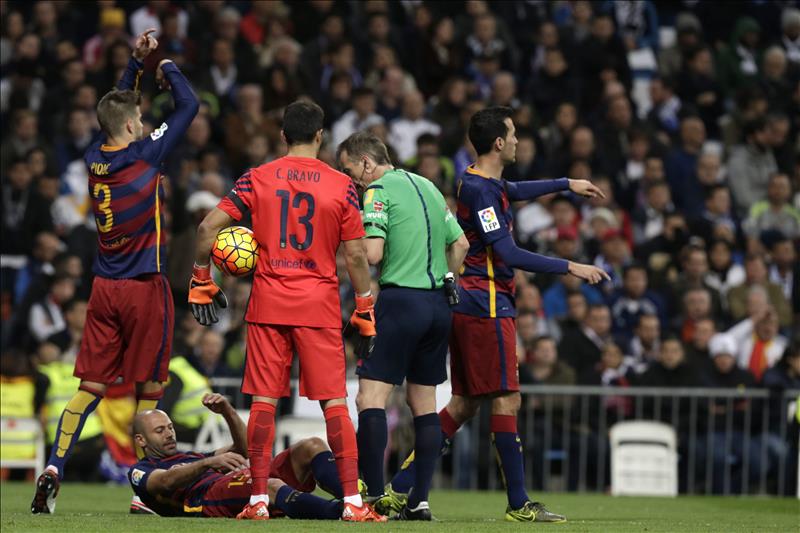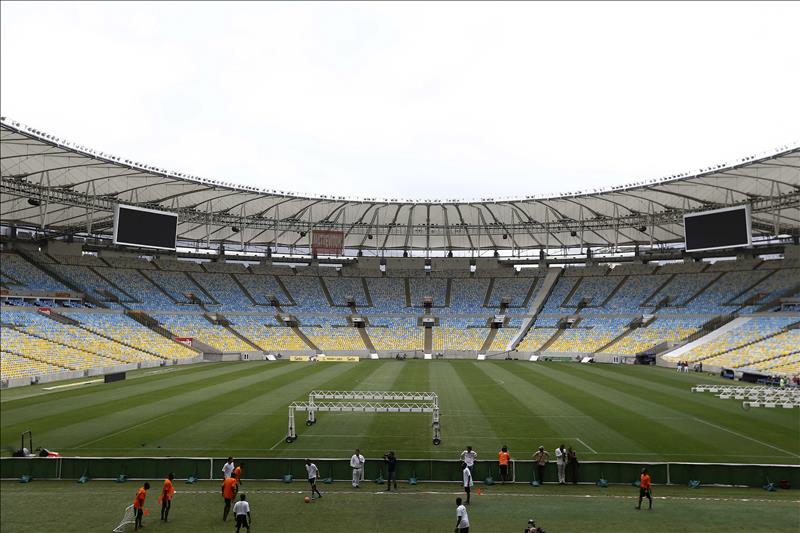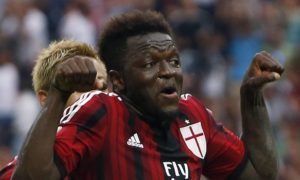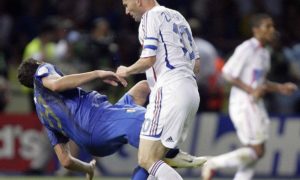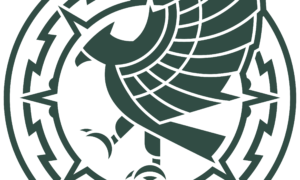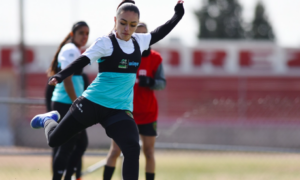Matthew Doyle.- The League Cup 2024 officially begins on Friday. That process will bring us about two weeks of games fueled by a solid dose of unpleasantries almost every time out – the LIGA MX vs. MLS rivalry is very real, as we saw first-hand last year – as the wheat is separated from the chaff.
That means this is a good time to look at all 47 teams and break them into tiers. As always these teams are roughly in order of how good I think they are, but what really matters is the tier designation.
And remember: Everyone’s chasing that shiny trophy, one of three 2025 Concacaf Champions Cup spots, some hefty prize money and bragging rights.
Tier 1: The Favorites
These are the teams that are clearly, I think, the best bet to win this thing. They don’t need lucky breaks or new signings; they just need their typical amounts of luck to blend in with the level of talent already on their rosters.
Give me this group vs. the field and I’m taking the winners to come out of this group.
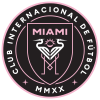
The defending champs are deeper and better than this time last year. That team won because Lionel Messi got on an all-time heater – even by his impossible standards he was scorching – and carried the Herons to their first-ever bit of silverware. This team has more goalscoring, more creativity all over the field, and obviously the experience of winning from last summer.
Just as obviously, they’ll miss Messi if he doesn’t play, but I don’t think that’s the most important personnel variable for this team this summer. I think it’s actually center back David Martínez, who’s expected to arrive on loan from River Plate and is more important in terms of raising Miami’s floor. Their one weak spot this year has been center back, and if Martínez can fix that, we’re talking multiple trophies in Fort Lauderdale.

The reigning MLS Cup champs enter Leagues Cup playing some of the best ball in club history and with very realistic hopes of adding to their trophy cabinet.
It would serve as a measure of revenge after a teamwide case of food poisoning killed their chances in the Concacaf Champions Cup final, which turned into a 3-0 Pachuca rout. That loss is one of just four the Crew have suffered in the past four months, with the others coming against East titans FC Cincinnati and Inter Miami before a surprising stumble in Atlanta this past weekend.
I think that was an aberration. I picked Columbus to win my bracket.

Top of the Apertura table with 10 points from four games, Cruz Azul absolutely loaded up this summer, spending more than $20 million to bring in two new starting midfielders, a new right back, and old friend Giorgos Giakoumakis up top.
They have looked like the best team in Mexico this summer, including and especially during a massive 4-0 win over Monterrey. Though I will admit I am in no way a fan of all the tinkering manager Martin Anselmi is prone to.

Los Aguilas have had a middling start to their season with just two wins and two losses from four games, but they’re the reigning Bicampeones, just the fourth team ever to manage that. And they followed it up by beating Tigres in the Campeón de Campeones. So… pretty good résumé!
Add on top of it the fact they almost certainly have one of the two most talented overall rosters (along with Inter Miami), one that was reinforced with the addition of Érick Sánchez from Pachuca. More help is expected to arrive this window – Club América are never done shopping, and while that means early-season chemistry can sometimes be a problem, this club knows how to build a title team.
And they’ll have the home crowd basically everywhere they go, to boot.

They’re the oldest team in the tournament and they are managed by one Veljko Paunovic, who has underachieved at virtually every stop over the past 10 years.
And yet they’re still one of the most talented teams in the region, and in André Pierre-Gignac they have the region’s best forward of the past decade, along with plenty of support around him.
Tigres have a long history of playing ugly, but doing just enough to win. Seems like tournament ball, right?

Getting wrecked by Cruz Azul is the one blemish on Monterrey’s résumé right now, though I want to note two things:
- Their LIGA MX schedule thus far has been soft.
- They’ve actually been a selling club this window (so far) for just the second time in the past 10 years.
Overall they don’t look as deep or imposing as some of the great Monterrey teams of the past 15 years, but they’ve earned a ton of equity when it comes to winning continental titles. So I’ve got them here.

By the underlying numbers, LAFC are having one of the best seasons in recent MLS history. By the boxscore numbers and the standings they haven’t been quite so good, and as a surprising 5-1 loss earlier this month to Columbus showed, they can be vulnerable if they’re out of rhythm. Still, that result is very much an outlier for a team that’s blended more patient possession into their overall transition ethos. They had become too one-note last season – transition first, last and always – and are better this year because they have other clubs in the bag.
Expect Olivier Giroud to arrive mid-tournament and get into the XI. They already look like a Giroud team at times with Kei Kamara out there playing as the No. 9.
Tier 2: The Contenders
Each of these teams is either more flawed or less proven than the groups in the tier above. In the case of, say, Cincinnati, it’s because they’ve been devastated by injuries. In the case of Toluca or Houston, it’s because we just don’t have enough data with the current group on the field to know how good they actually are.
For any of them, it would be a surprise (but not an outright shock) if they win.
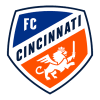
If Cincy hadn’t lost two starting CBs in the past month they might be the clear favorites in this tournament, full stop. As it is, they hardly missed a beat since Matt Miazga and Nick Hagglund went down, even with Miles Robinson on international duty at the time as well.
Then, following a 6-1 win over Inter Miami, the bottom almost completely fell out, and they’re now limping into Leagues Cup with three straight losses (including a home loss to the Fire; yuck!) in tow. The roster’s depth has been tested past its breaking point and Pat Noonan’s inventiveness as a manager can only do so much. They need to integrate a veteran CB, stat.
Even if they don’t, they still have enormous match-winning ability in Luca Orellano, Kevin Kelsy and, especially, the reigning Landon Donovan MLS MVP, Lucho Acosta.
EDIT: Cincy have their guy, acquiring Nigerian defender Chidozie Awaziem from Boavista.

The Red Devils have been dormant for about 15 years, but it feels like they’re back. They had the second-best goal differential in the Clausura at +15, just behind América (+18), and so when their dreams were dashed in the quarterfinals against Chivas (agg. 1-0), they went HAM, spending more than $20 million total on reinforcements from the backline to the front. Included in that is $4 million spent on RBNY d-mid Frankie Amaya.
They’ve been rewarded with another strong start as they’re fifth in the Apertura table with a 2W-0L-2D record, including a very impressive 1-1 draw at Cruz Azul on the weekend.

It was around this time last year when everything clicked into place for the Dynamo, who tiki-taka’d their way to a US Open Cup title and a place in the Western Conference Final. That midfield is still in place, and the backline is even better than last year.
What’s been missing is an elite center forward and a goalscoring winger. We’ve all said for a year if Houston add those kinds of pieces, they could maaaaaybe push into the very top tier, or at least come very close.
Well, they’ve added those guys, making center forward Ezequiel Ponce the club’s record signing and bringing in left winger Lawrence Ennali on a U22 deal. The rebirth of Sebas Ferreira means Ben Olsen’s suddenly spoiled for choice up top.
So, in theory, the time is now: This front line should give them the punch they need to compete for the crown in every competition they play in, including this one.

Pumas are second in the Apertura table with an impressive 3W-0L-1D start, getting balanced scoring from an impressively balanced team. There really don’t appear to be any scabs to pick at in this side under manager Gustavo Lema, who’s got them playing out of a pretty standard low-ish block 4-2-3-1 that highlights the ability of the wingers in space.
The most pleasant surprise thus far is the play of attacker Jorge Ruvalcaba, a Mexican-American who returned to the team after a year on loan at Standard Liege. He’s got 2g/1a so far and looks like a match-winner.
The knock, then, is he’s not a proven match-winner, especially when you compare him to the other teams in the top two tiers. That means more of the special moments fall on the shoulders of veteran No. 9 Rogelio Funes Mori, who is approaching his mid-30s (and mostly looks it).

RSL again entered a season with low expectations – outside of the club, anyway – and again they’ve blown preseason predictions out of the water.
They looked like a team headed for trouble after most of Pablo Mastroeni’s staff was dismissed this past winter, but with the new staff has come a new game model tilted toward pitch control. That game model, mixed with the maximum effort Mastroeni always coaxes out of his players, breakthroughs from Emeka Eneli, Diego Luna, Andrés Gómez and an MVP-caliber campaign from Chicho Arango has had this team at or near the top of the West all season long.
I’m sure they’re thinking about winning this thing as they kick off. Surviving the group stage without the suspended Arango makes things very, very tricky.

The Galaxy are having their best season in forever, sitting atop the Western Conference coming into the tournament thanks to new acquisitions and a newfound squad balance that has allowed those new guys (primarily Gabriel Pec and Joseph Paintsil) and the holdovers (primarily Dejan Joveljic and Riqui Puig) to blend rather seamlessly into a collective that’s as good as the sum of its parts.
It’s a Greg Vanney team, so you know they love to get on the ball a ton and attack, but they’ve also shown a willingness to sit deep, absorb and hit on the break. The defense comes and goes, but overall this is probably the best Galaxy team in a decade.
The big question: Can Riqui keep his positional discipline? If the answer’s yes, the Galaxy might be a tier too low.

I have too much respect for Pachuca as an organization to put them any lower than this despite the fact they sold the best player from this year’s Concacaf Champions Cup winners (central midfielder Érick Sánchez) and how they have been pretty punchless to start the Apertura. On top of that, I will add the fact Pachuca win CCC (née CCL) titles because of their home-field advantage, which they will not have for a single second in Leagues Cup.
Still, I said what I said: Too much respect for Pachuca to put them any lower than this.

Injuries and a weird propensity for red cards hamstrung (literally, in the case of Pedro de la Vega) Seattle to start the year – the first in the post-Nico Lodeiro era.
But as they’ve gotten their core pieces healthy, and as Jordan Morris has grabbed the No. 9 role with both hands, the Sounders have steadily climbed the table. Their experience, quality and stability make them a high-floor team that’s unlikely to beat themselves in a tournament setting. A healthy, dynamic and productive de la Vega, playing inverted on the left wing, is what they’re counting on to raise their ceiling.
This is basically the first time all year we’re going to get to see what a full-strength Sounders side looks like. It’s exciting.

They’re not really giants anymore, with just four league titles in the past 55 years, but they’re still popular as hell and have a lot of talent. That was good enough for them to finish sixth overall in the Clausura before losing in the semifinals against their biggest rival, Club América (agg. 1-0).
Chivas had one of the best defenses in the league, but goalscoring remains an issue. Thus far in the Apertura that’s been solved by Quakes export Cade Cowell, though it should be noted two of his three goals (and both of Chivas’s wins so far) came against Mazatlán and Querétaro, who are waaaay down the bottom of the standings.
Still, this midfield’s got talent, and both the defense and goalkeeper are solid. If Chicharito finds one last month of glory in his boots, a title’s not entirely out of the question.
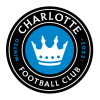
The Crown began turning things around – defensively anyway – around this time last year, when Andrew Privett and Adilson Malanda became the starting center back pairing in front of Kristijan Kahlina. The defensive foundation that trio provides was only strengthened with the arrival of manager Dean Smith, who has instituted a low-risk, no-frills, counter-attacking 4-2-3-1 scheme based almost entirely around his team’s ability to absorb punishment and then hit on the break.
I think they are a playmaker short. But I am putting them here in the hopes they get one signed in the next week, which would then make them an extremely fun dark horse pick to win this thing.
Tier 3: The Pack of Minimal Plausibility
Good teams for the most part, but ones where you’ve really got to stretch the imagination to see them winning a title next month.

Orlando were floundering badly until about mid-June, when manager Oscar Pareja finally had his come-to-Jesus moment and began playing Martín Ojeda – by far the team’s best chance creator – as the No. 10 in a 4-2-3-1 formation. Things almost immediately clicked into place and the Lions suddenly look much more like the group that took 63 points in the regular-season last year.
Along with Ojeda, Facu Torres has been on an absolute heater, and Ramiro Enrique has settled in nicely as the No. 9 with Duncan McGuire on international duty.
The defense isn’t totally solved and Pedro Gallese might be cooked, though. So I can’t see them surviving a whole month, but nobody will want to face this version of Orlando.

The Red Bulls have famously made the Audi MLS Cup Playoffs a record 14-straight seasons, and look a good bet to make it 15-straight this season. They have even more famously played their entire existence without winning a cup of any sort, and that is the team’s full story: they have defensive talent and team-wide buy-in, but have always been one match-winner short in knockout tournaments. It is, and always has been, a skill issue.
It sure looks like that’ll be the case this year as well, though they do have a DP slot open and are expected to make a move. Make the right signing and they could jump a tier real quick.

Portland won just two of their first 12 games and looked like a team destined for a midseason overhaul. Instead, they’ve gone 8W-3L-2D since then, and are playing some of the most fun, open, attacking soccer in the league. Their front four fits together perfectly, with Evander pulling the strings and Santi Moreno doing the secondary playmaking, while Felipe Mora does most of the goalscoring and Jonathan Rodríguez is the secondary goalscorer.
Because of that balance, they’ve asked less in attack from their fullbacks, and because of that, they’ve become a more stable defensive team. Eryk Williamson’s recent return has helped a ton, as well.
I still think they’re too easy to build against, as we saw last weekend in Carson. But there’s a chance I’ve got this team a tier too low.

The Pigeons have been something of a mystery box team this year, as manager Nick Cushing has tried to find the right mix of players. When he hits, it’s very good – as we saw in April and May when NYCFC took eight wins from nine.
Since then, though, it’s been up and down as key players have missed games and the team’s depth has been tested (and largely found wanting).
Here is the thing: If Talles Magno gets out of Cushing’s doghouse and onto the field, which means Santi Rodríguez is the No. 10, then I could see this team making a deep, deep run. And hell, if not Talles, then how about Julián Fernández or Agustín Ojeda?
Getting that extra attacker out there is the main variable for this team, and has been all year.

The ‘Caps are once again a very good team, and once again part of that good-ness is due to the incessant tinkering of head coach Vanni Sartini. He has his team line up in a 3-4-3 off the ball that turns into a 3-3-3-1 with the ball, with Ryan Gauld dropping in to become a No. 10 and Fafà Picault offering penetration from the left wing.
It’s a lot of moving parts, and it may not serve this team any better than last year’s more standard 3-5-2. But it mostly works.
And it mostly doesn’t matter because the real issue is the ‘Caps are a good, fun team that is still an elite piece short when they face the best in the region. We’ve seen it repeatedly over the past few years in Leagues Cup, CCL play and the playoffs.
They need more firepower to win the biggest games.

The Rapids front office cooked this past winter, bringing Djordje Mihailovic, Sam Vines and Zack Steffen back from Europe, making moves within the league for depth pieces and – maybe most importantly – hiring the right guy in Chris Armas. He’s got them playing high-paced soccer that gets them into the box a ton and has developed young players like Cole Bassett and Moise Bombito into the best versions of themselves.
The season to this point has been a resounding success for a club in need of exactly that. But this also feels like a team that’s one elite attacking piece (a goalscoring winger, to put a finger on it) away from true contention, especially given Steffen’s up-and-down form when it comes to keeping the ball out of his net.








